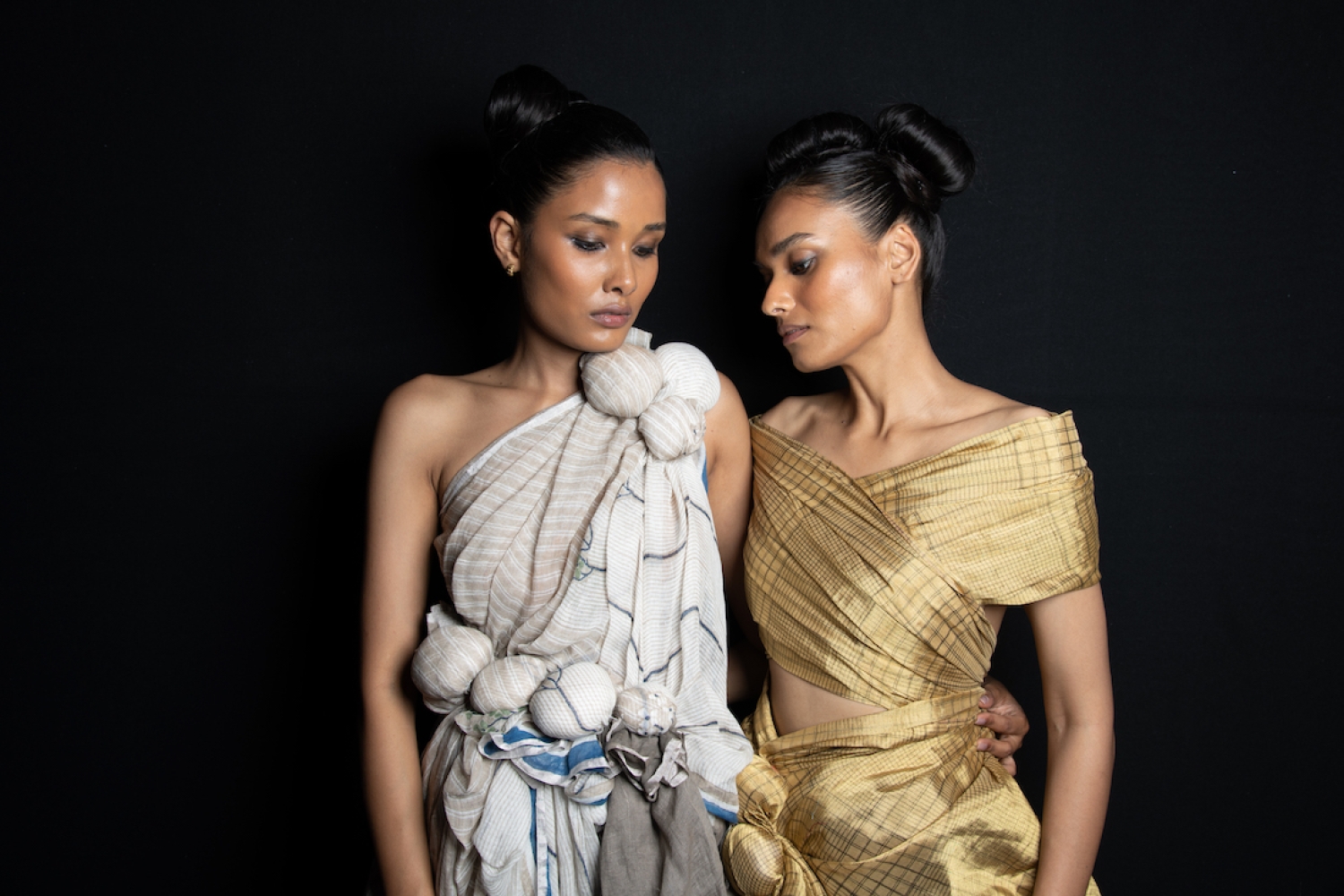

Stars make you look heavenward, and mud pulls you to Mother Earth. Who hasn't known the waft of fragrant earth as the first rain touches the mud. It is the perfume of life. As E.E.Cummings playfully put it, that moment is childlike, as our world becomes “mud-luscious and puddle-wonderful.” But here, choosing mud to be the main heroine of a design collection is a deep act of reverence to nature, a spiritual tribute to soil- the fount of life itself. It couldn't be a more timely affirmation when world over, people especially from the rural and artisanal communities are fighting for soil sovereignty and the sustainability of earth. The Maoris talk about elevating the mana of the soil. Mana, the cultivator of energy and power, of soil. In Sanskrit the earth is Karma Bhumi- the land of dharmic action. The significance therefore of a handful of mud is spiritually interwoven with people and the philosophy of life.
This season Anavila pays homage to Dabu-an ancient mud resist hand block printing technique from Rajasthan, the origins of which can be traced to about 675 A.D. It is a time-honoured village handicraft practised in several rural areas of Rajasthan. In the past, Dabu was only done by women; but today the secrets of the craft are being taken forward by a handful of families who are carefully passing on the craft to the next generation. Dabu plays a magical role in Anavila’s repertoire of saris, the length of the textile serving as a perfect canvas for ancient storytelling. If the sari can be seen as an emotion, a state of mind, it is the repository of our past and present memories. Not bound by modern accoutrements of style-zippers, buttons or belts, the sari, uncut and unstitched fabric, speckled by Dabu motifs, flows into the vessel that is the body. The sari becomes the fabric of life.
Dabu, which comes from the Hindi word dabana or press, is very labour intensive and involves several stages of printing and dyeing. A deeply sustainable practice, it honours local resources (mud, gum, lime and waste wheat chaff), and a complete reliance on the bounty of nature. The slowness of the process and the design repetition both lend themselves to a kind of meditation where the maker and method become one. The process is so immersive, it is said, the mind ceases the whirlwind of thoughts and seeks only the unspoken quest for beauty and design symmetry. It is no wonder, Anavila’s Dabu saris have extraordinary beauty and depth, the natural dyes of ivory, ochre, sage green, indigo, madder, kashish and black with a luxurious presence of gold and silver- gently washed out by the sun. Fluid florals and architectural geometry, the motifs, are derived from the natural surroundings of local flora and fauna. Sometimes, like our lives, the mud paste cracks and leaks, creating a distinctive vein-like effect- a perfect example of Wabi Sabi- the beauty of the imperfections of the hand.
Words Bandana Tewari
Date 29-03-2023